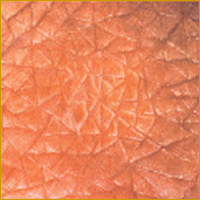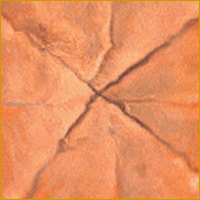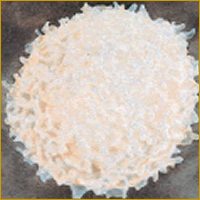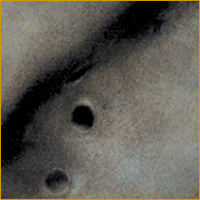Natural scientists arm themselves with a microscope or telescope. And what about business economists? Let’s take a closer look at the importance of resolution and how to measure the quality of reports.
People working in technical fields are so lucky. They use error rates, rejection rates and other standard measurements to determine the quality of their output. That makes me jealous and a little restless. Why isn’t there such a thing in management control? Why don’t we have a set of standards to measure the quality of our reports? That’s why I have compiled a few myself. Let’s start off, though, by taking a closer look at the grass on the other side of the fence.

‘Powers of Ten’: To enhance your perception, you need advanced resolution.
As Charles and Ray Eames’ film ‘Powers of Ten’ clearly shows, all advancements in human perception come from additional resolution. The film starts with a young couple lying on a blanket in a park. The camera moves itself away from them in powers of ten until the earth and ultimately our entire solar system represents a tiny dot within something greater. This allows us to see its size in comparison. In the second part, the camera travels into the human body – again in powers of ten – to show the power of detail. It’s not surprising that Galileo’s groundbreaking work in astronomy came after the invention of a telescope with 20 times the previous strength.
In order to understand and conquer the universe or make new medical discoveries, powers of ten are essential – to zoom in on things that are far away or to drill down into microscopic detail. Time and time again, managers also have to view their company as a whole and in relation to their environment. They need to understand their direct competition as well as regional, national and international markets. They also need a clear understanding of details, which regulate the way their own structures and resources work together.
That, however, only works with presentation types that pair information diversity with density. Everywhere else and for similar reasons, density is a value of its own kind and people strive to achieve it with all their might. Whether it’s more transistors on a circuit board, more pixels per inch on a computer screen, more dots per inch in printing, more data per DVD, higher transfer rates in existing data cables or better air-fuel ratios in motors, density is always the key to better efficiency, understanding and progress.
Here are a few report quality standards that I have put together:
Data density The quality of a report increases relatively to its density – assuming that comprehension of the report is not affected negatively at the same time. If the only criteria were the number of data values per page, the stock section of the Wall Street Journal would be the perfect report containing almost 3,000 values per 8.5 x 11 page. Considering the pitiful amount of data in many standard reports today, I think that a very simple measurement of density would already be a tremendous help.
Differentiation A new question to ponder is what resolution means for graphical elements. It’s certainly an interesting question for people living in Pixelland. How long, wide, or high do columns, bars, lines and points have to be? Is there a certain benchmark so that we can call it quality once we have achieved it? Yes. Some bars are so ridiculously wide that you could show differences of 0.2% on them.
Precision Do our reports always have to show exact values down to every last cent? Certainly not. In addition to making it harder to read and understand the actual message, unnecessary precision also wastes valuable space. The right level of accuracy can also influence the quality of reports. Here, too, you can set quality standards to measure this.
Completeness We have all seen map graphics in which a smaller image illustrates where in the world the country or city displayed in the main image is located. Similarly, we need reports that show details but still help us keep the big picture in perspective. What is beside it? What is below? A high-quality report is complete. We understand the data and their relationships both vertically and horizontally.
After taking a closer look at the other side of the fence, I’m confident that we won’t be envious of technical professions much longer.

10 x 10 cm of realism: Our skin in a resolution of 10-1.

We move closer. 10-2 equals 1 centimeter

Even closer at 1 millimeter (0.1 centimeters). The wrinkles in our skin are just visible at 10-3

10-4 or 0.1 millimeters

Now we’re on the inside at 10-5 or 10 micrometers. We can see white blood cells (lymphocytes)

10-6 or 1 micrometer is a millionth of a meter. Unbelievable. Here we can see the nucleus of a white blood cell

Kommentare
Sie müssten eingeloggt sein um Kommentare zu posten..